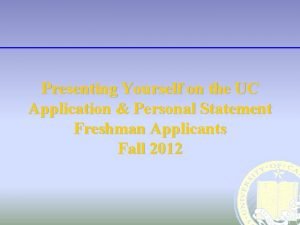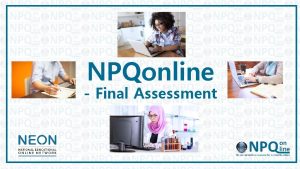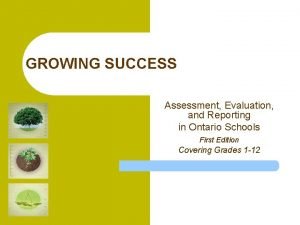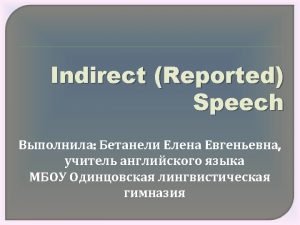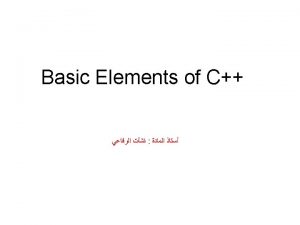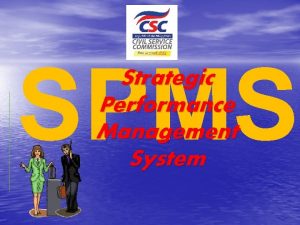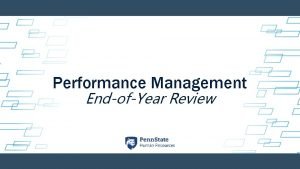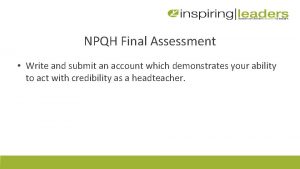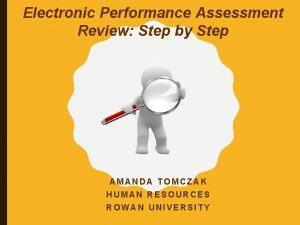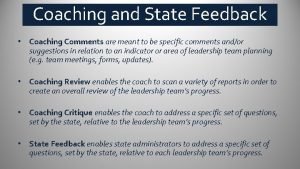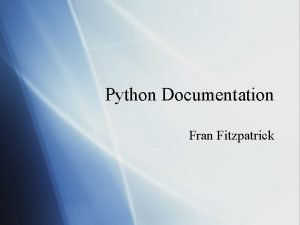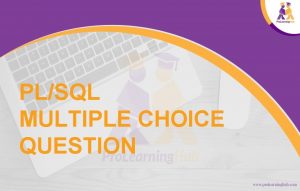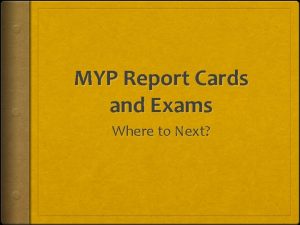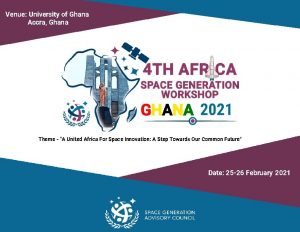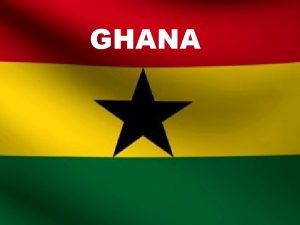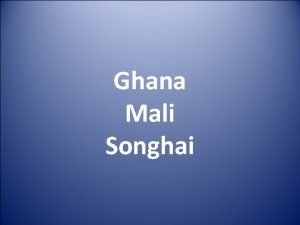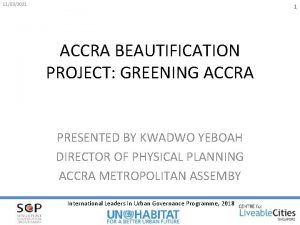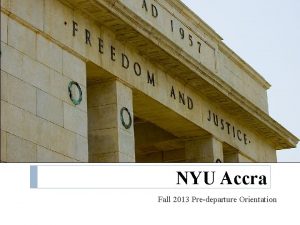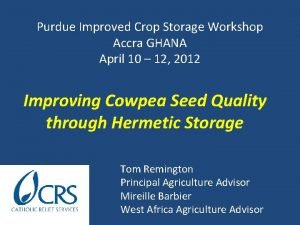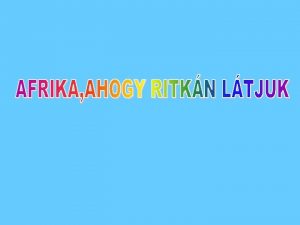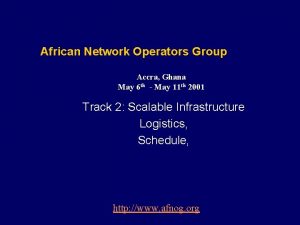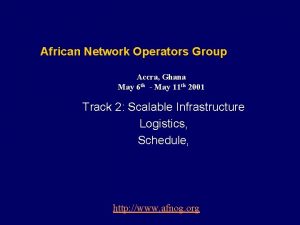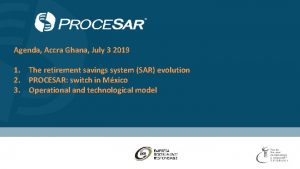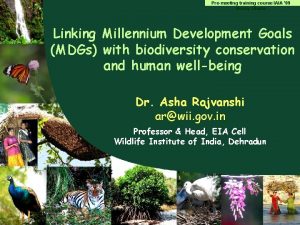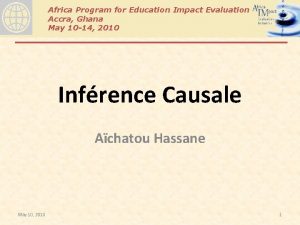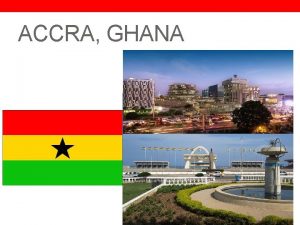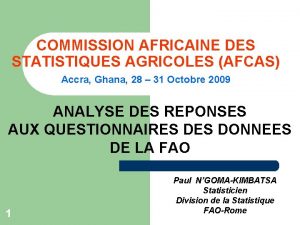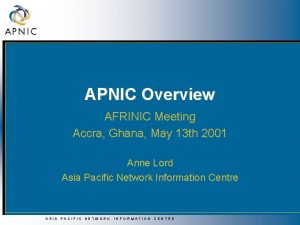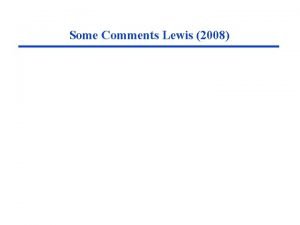UNIVERSITY LEADERS FORUM 2008 ACCRA GHANA Comments on












![Information and Communication of Technology [ICT] • At University of Dar es Salaam we Information and Communication of Technology [ICT] • At University of Dar es Salaam we](https://slidetodoc.com/presentation_image/2e27f8a1b7f9d2da5a83d2f0e79b2100/image-13.jpg)






- Slides: 19

UNIVERSITY LEADERS FORUM 2008, ACCRA, GHANA Comments on Dr. Wisdom Tettey’s presentation on Tanzanian National and UDSM Education Profiles By Prof. Rwekaza S. Mukandala Vice-Chancellor, University of Dar es Salaam, TANZANIA

Introduction • I wish to appreciate sincerely the presentation made by Wisdom Tettey, which is well illustrated by tables about the educational situation, or profile, of Tanzania in general and the University of Dar es Salaam, more specifically. 2

Introduction • • Although it is not stated anywhere on the tables, I believe two local documents may have assisted in building up the profiles, namely (a) (b) • • The UDSM Facts and Figures, compiled by the University of Dar es Salaam (for various years since 1992), and Basic Statistics on Higher Learning Institutions in Tanzania, compiled by the Ministry responsible for higher education (for various years since 1991). These documents have assisted us in Tanzania towards keeping vital figures and statistics for various purposes – keeping institutional memory, as well as giving us a sense of direction in thinking, quick referencing, and planning for the future. These documents have reduced the problem of hypothesised and confusing data in our kind of reporting. I acknowledge the fact that Mr. Tetty must have had access to additional sources, but the overviews and trends emerging from his figures and those from our sources are consistent rather than contradictory. I fully congratulate him. 3

Few Comments on the Presentation • In terms of: (a)The figures and statistics mean, pushing them to the latest year of reckoning (namely 2007/8 or 2008/9 where possible), and (b)The options for action to maintain the gains achieved while preventing erosion of quality. 4

Selected Areas for Comments 1. Student Enrolment 2. Information and Communication technology 3. Research and Publication 5

Student Enrolment • The education system at the national level in Tanzania has experienced a dramatic expansion over the last two decades. • By 1995 there was already a preponderantly bigger proportion of the school-going population in the country than the Government alone could single-handedly cater for. • Similarly, student intake and enrolment into higher education institutions in the country has been on the increase, particularly in the last 20 years, with a seven-fold (or 700%) increase from a mere 5, 267 students in all institutions of higher learning in the country in 1991/92 to 23, 603 students in 2001/02, and to 39, 218 in 2006/07. • The Government’s education and training policy of 1995 is publicly recognized as the point of departure in responding to an exponential social demand for education. • Government deregulation of the education sector, allowing for participation of the private sector in education provision, leading to an overall increase in the school-going-age population to 4. 6 million by year 2000, as contrasted from 3. 5 million in 1990 (Basic Education Statistics in Tanzania, United Republic of Tanzania (various years from 1990 -2000). 6

Student Enrolment Impetus • The Government’s education and training policy of 1995 is publicly recognized as the point of departure in responding to an exponential social demand for education. • Government deregulation of the education sector, allowing for participation of the private sector in education provision, • Leading to an overall increase in the school-going-age population to 4. 6 million by year 2000, as contrasted from 3. 5 million in 1990 Ref: Basic Education Statistics in Tanzania, United Republic of Tanzania (various years from 1990 -2000). 7

Student Enrolment at UDSM • The student enrolment expansion has been even more resounding at the University of Dar es Salaam, for 14 years till 1984 (the only national university in the country, and until today the largest university among all 15 universities) • Transformation Process at UDSM • Student enrolment has almost skyrocketed from a mere 3, 052 students at the launching of 1 st Corporate Strategic Plan, 1994 to 18, 000 in 2008/09 — by more than 400 percent! (Appendix 1) 8

Student Enrolment at UDSM • Improved the academic-staff/student ratio for the University from • a hardly-believable 1: 3 in the 1980 s • To 1: 7 in 1994/95, Upwards to 1: 10 in 1999/2000, • To 1: 15 in 2003/4, to 1: 19 in 2004/5, • To 1: 17 in 2005/6 • and back again to 1: 19 in 2007/8. The UNESCO ideal ratio for higher education ranges from 12 to 15 students per academic staff member 9

Student Enrolment - Challenge • Even though the figure for each of these years is still low in comparison with the rates of student intake and enrolment at Makerere and Nairobi universities within East Africa. • But for Tanzania, it has been a breath-taking experience — and a daring and challenging one, • These developments have demanded parallel developments in physical facility acquisition, room and space expansion and ensuring availability of teaching-learning materials 10

UDSM Rethinking Vs Student Enrolment Two years ago, we began thinking about the increasing student enrolment 1. Halt the now rather expansionary undergraduate student enrolment other universities to enrol more of undergraduate degree programmes; 2. Let UDSM, while maintaining the current undergraduate enrolment level, concentrate more on postgraduate enrolment (into masters and doctoral programmes), for staff recruitment into other universities [whose current situation does not allow or enable them to train the critical ‘mass’ to join university teaching]; and 3. Let us now continue to work more on the quality side of things, including negotiating with Government for a more deserving budgetary allocation to attend to the state of repair of the physical plant and facilities, to motivate and ‘incentivate’ the staff and seek more resources for staff development for teaching departments to be able to handle the already increased student enrolment UG level and increasing enrolment PG level 11

Two More Points • Let me introduce two more points that are not within the brief of Dr. Tettey’s major presentation • I think they have relevance to our discussions on a university’s profile. 1. ICT as a tool in teaching, learning and communication in general, and 2. Research and publication for knowledge creation. 12
![Information and Communication of Technology ICT At University of Dar es Salaam we Information and Communication of Technology [ICT] • At University of Dar es Salaam we](https://slidetodoc.com/presentation_image/2e27f8a1b7f9d2da5a83d2f0e79b2100/image-13.jpg)
Information and Communication of Technology [ICT] • At University of Dar es Salaam we first embraced the concept of ICT and began to pursue this new area of information and communication in 1992 with the onset of an electronic mail system. • At that time we still had a small University Computing Centre (at that time used for computer programming of the salary payroll for the University) • The revolution began in 1992 when individuals within the University — right from the Chief Executive to the secretarial cadres — were introduced and trained into office automation, electronic communication and Internet surfing and website resource searching and retrieval. 13

ICT developments at UDSM The University Computing Centre (UCC) providing leadership Vital facts and statistics on ICT 1. Network Infrastructure • UDSM has a Fibre Optic Backbone (FOB) network connecting all major buildings within the main campus, extending through student residence halls to neighbouring Ardhi University; • Local Area Network (LAN) and Wide Area Network (WAN) installed within and between buildings at the main campus; • Wireless Hotspots Network installed in nearly all-strategic areas within the campus, enabling easy access to the Internet resources from one’s Laptop computer. 14

ICT developments at UDSM 2. Information Systems Academic Registration Information System (ARIS); Financial Information System (FIS); Human Resources Information System (HURIS); Library Information System (LIBIS); Learning Management System (LMS) — KEWL now having superseded Blackboard platform. • Timetable Management System (TMS), for managing space and time — for the 14 -working-hour day (from 7. 00 am to 8. 00 pm), Monday to Friday. • • • 15

ICT developments at UDSM 3. Internet Services • The University accesses the Internet via satellite (VSAT) technology. The current bandwidth in use is 9 Mbps (7. 5 down link and 1. 5 up link). • Public Access Rooms (PARs). These are special computer labs established in different student halls of residence to enable students to have access to Internet and other networked resources even beyond normal working hours and during public holidays. 16

ICT developments at UDSM 4. Distance e-Teaching/e-Learning Initiative • Faculty of Informatics and Virtual Education (FIVE) since 2006 • Directing a project for ‘Enhancing University Teaching and Learning Capacity (EUTLIC) through ICT-mediated distance learning in collaboration with the UCC and the Centre for Virtual Learning, • The University will offer online selected digitised courses • Beginning 2009, three university programmes will go online: (i) Postgraduate diploma in education - Faculty of Education (ii) Postgraduate diploma in engineering management, - College of Engineering and Technology), and (iii) Bachelor of business administration, BBA - Faculty of Commerce and Management These reduce classroom congestion at the main campus and enable wider student admission (and optimise equity) 17

Research and Publication at UDSM • Another important definitional aspect of a university profile. • In our- UDSM two corporate strategic plans (1994 -2004 and 2004 -2013) it takes first priority, along with teachingand-learning activity. • Despite difficulties in allocation to research through the regular budgetary allocation, • The University has tried to encourage and enjoin her academic staff to research and publish. Mainly through support from the University’s development partners but also through her own budget, a number of research projects have been undertaken and a number of reports, journal articles, and books have been written. • Appendix II lists a sample of titles of university-level publications based on research 18

THE END • Once Again I congratulate Mr. Tettey and • THANK YOU ALL FOR LISTENING 19
 2008 2008
2008 2008 Additional comments uc application
Additional comments uc application Tat meaning in hr
Tat meaning in hr Honesty appraisal comments
Honesty appraisal comments Npqsl sponsor comments examples
Npqsl sponsor comments examples Growing success marks
Growing success marks Sample of remarks
Sample of remarks C++ style comments
C++ style comments Ipcr adjectival rating
Ipcr adjectival rating Housekeeping items meeting
Housekeeping items meeting Npqh final assessment task examples
Npqh final assessment task examples Commentswrite a comment…
Commentswrite a comment… Expectations for unit and ratee examples
Expectations for unit and ratee examples Coaching review comments
Coaching review comments What went well comments
What went well comments Pydoc comments
Pydoc comments What is the result of the following 'vik' null 'ram'
What is the result of the following 'vik' null 'ram' Myp exams
Myp exams Aja cortizo
Aja cortizo How to write a good comment
How to write a good comment

